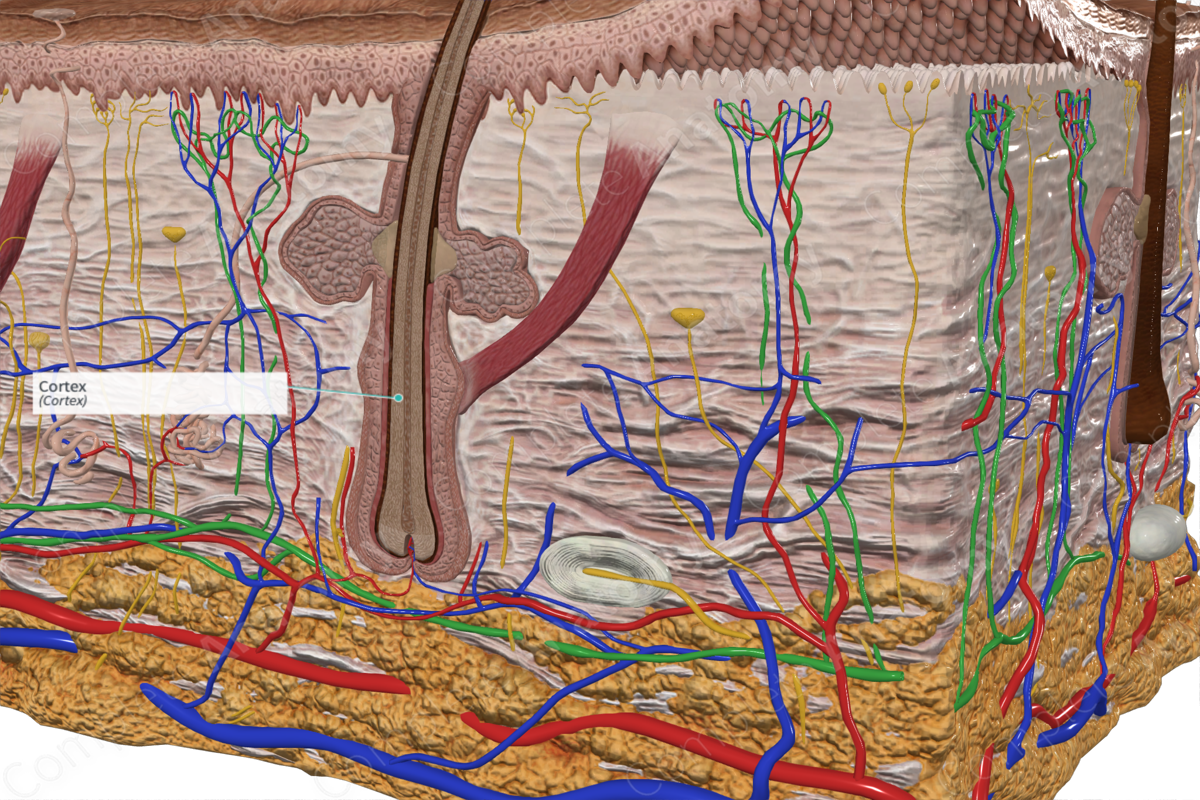
Quick Facts
The cortex is the middle layer of a hair, constituting the bulk of the hair substance, surrounded by the hair cuticle and often enclosing a small hair medulla (Dorland, 2011).
Structure/Morphology
The hair shaft is a rigid cylindrical structure which extends from the dermis or subcutaneous tissue through to the skin surface. The hair is composed of three concentric layers, the medulla, cortex, and cuticle of the hair, originating from the hair bulb at the base of the follicle.
The cortex is the intermediate layer of the hair shaft, surrounding the medulla. This is a thick layer which accounts for the majority of the hair width and is composed of heavily keratinized and densely packed cells (Young, 2006).
Function
The keratinization of the cells in the cortex results in this layer being very rigid, this gives strength to the hair. The cells of the cortex contain melanin granules, a pigment which will determine the color of the hair. These melanin granules can sometimes be found in the medulla in deeper shades of hair and occasionally the cuticle, but they are most commonly found in the cortex. There are two types of melanin which are responsible for determining hair color:
—eumelanin, which accounts for hair shades ranging from brown to black;
—phaeomelanin, which accounts for hair shades ranging from yellow shades of blonde to red (Preedy, 2012).
References
Dorland, W. (2011) Dorland's Illustrated Medical Dictionary. 32nd edn. Philadelphia, USA: Elsevier Saunders.
Preedy, V. R. (2012) Handbook of Hair in Health and Disease. Human health handbooks: Springer.
Young, B. (2006) Wheater's Functional Histology: A Text and Colour Atlas. Student consult: Churchill Livingstone/Elsevier.